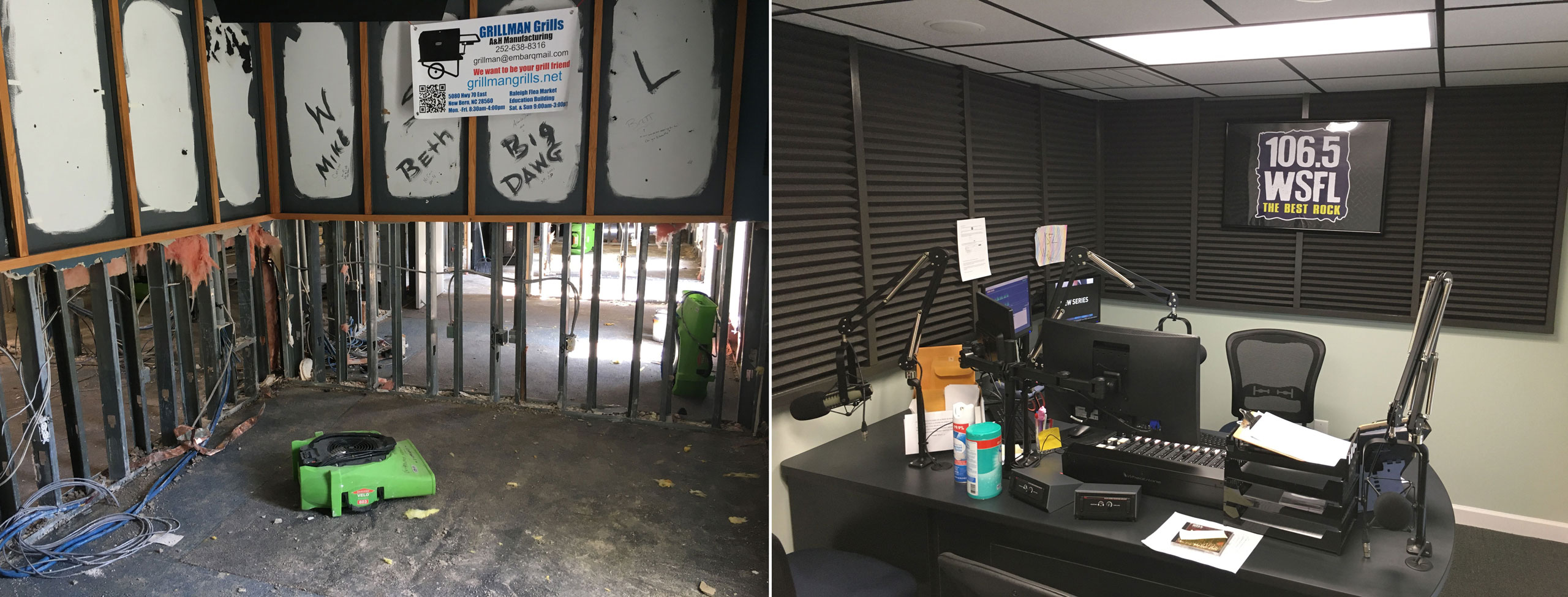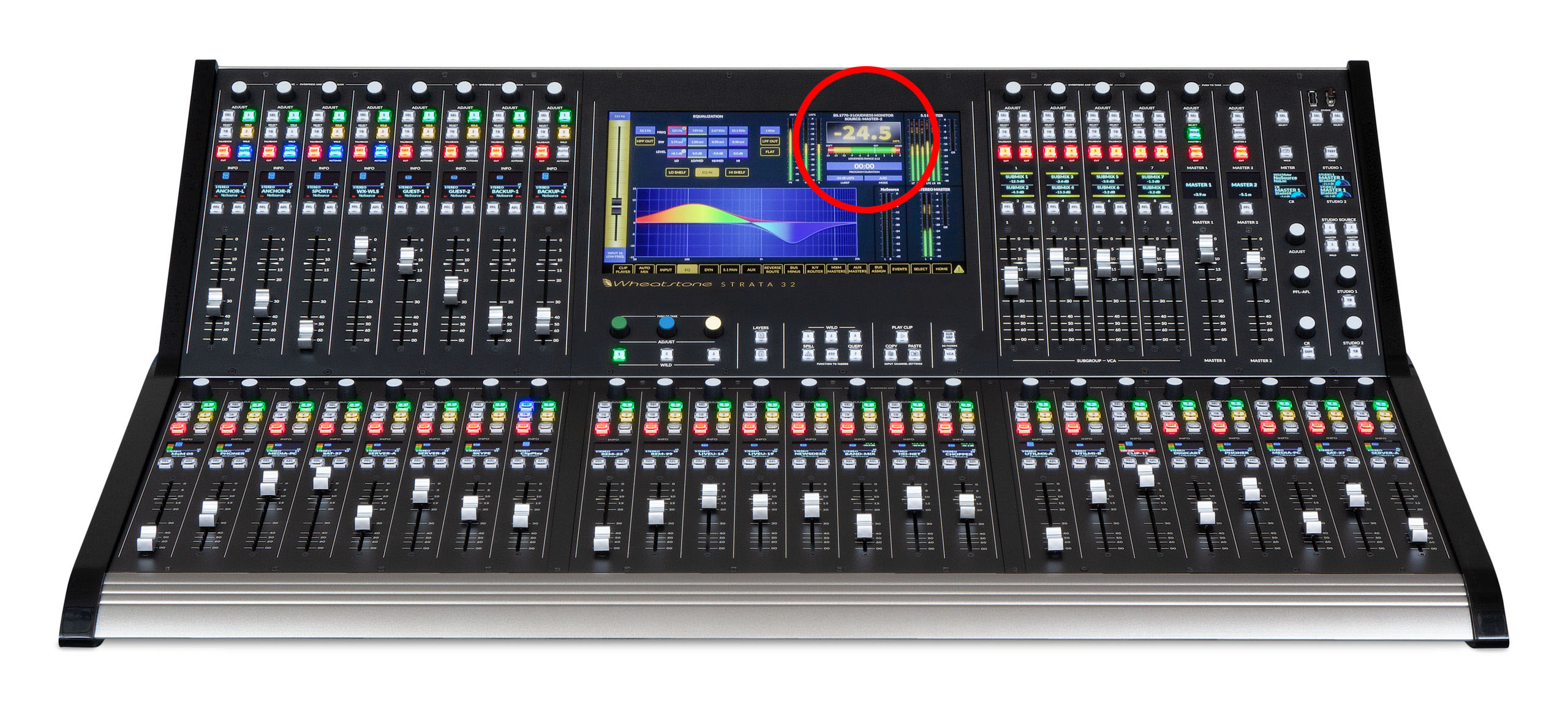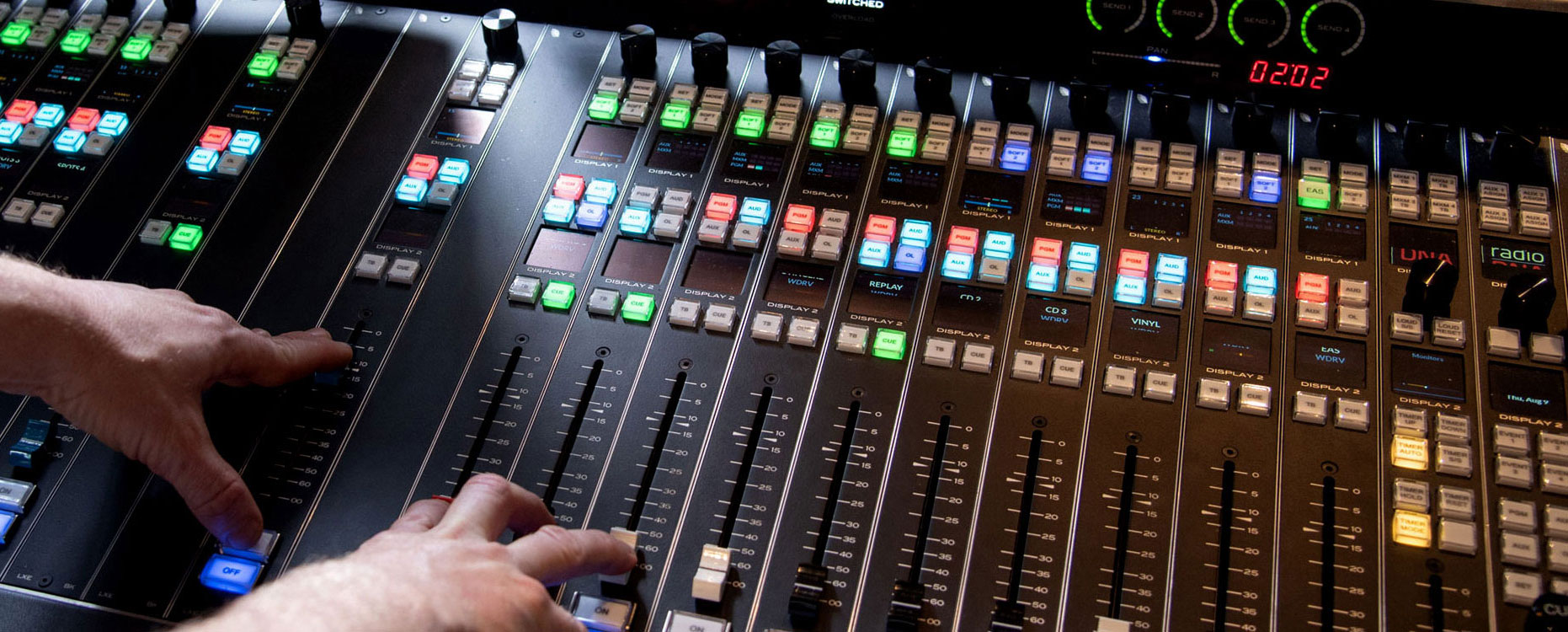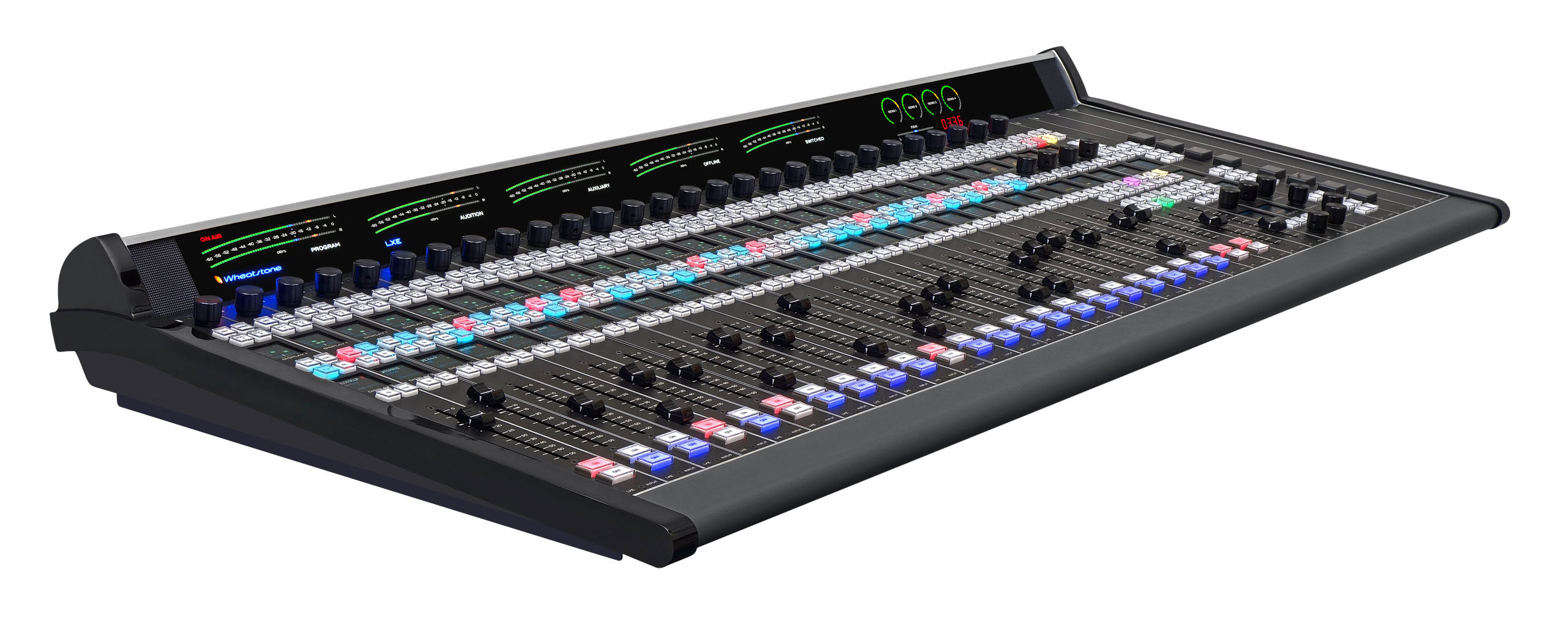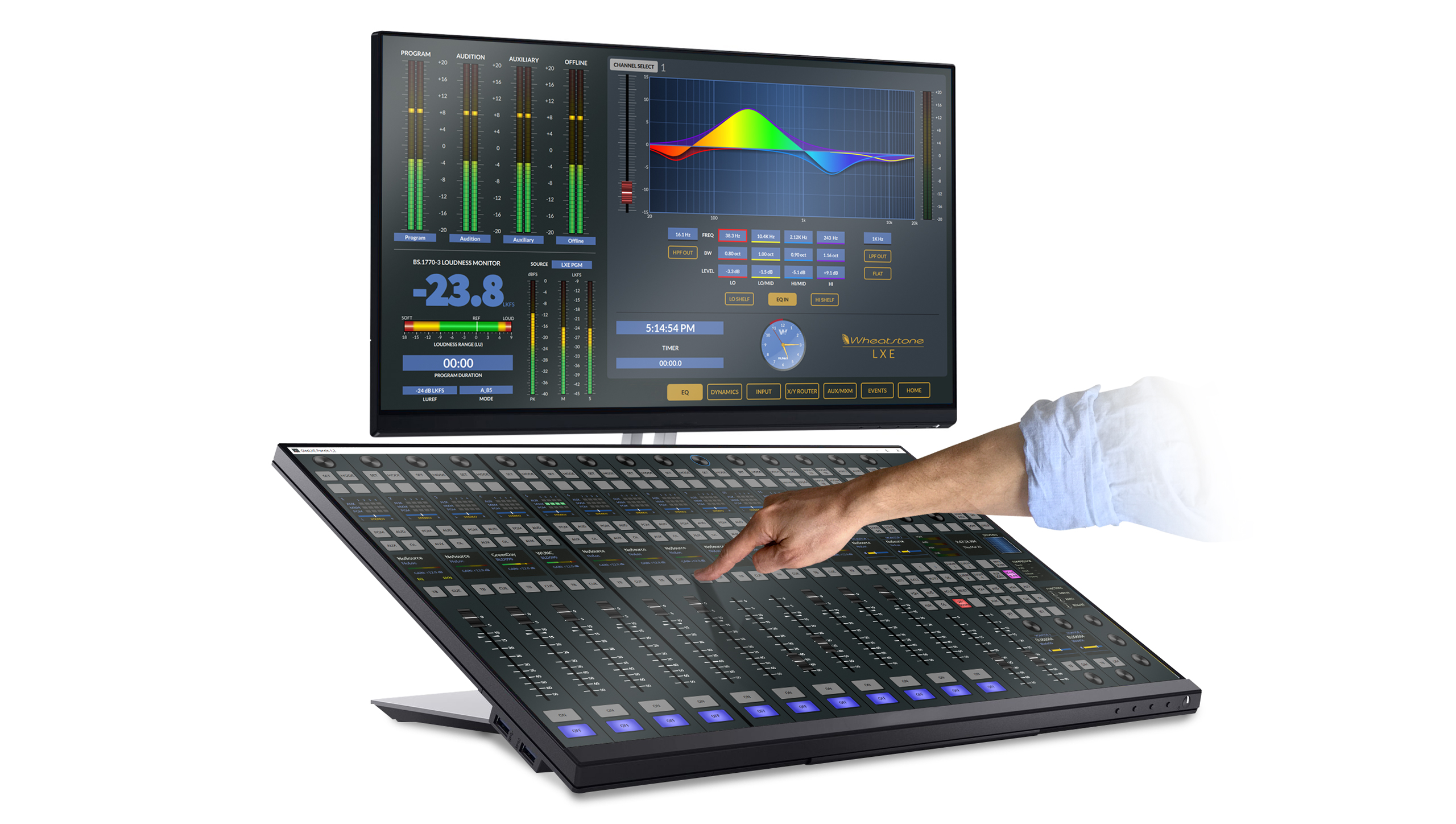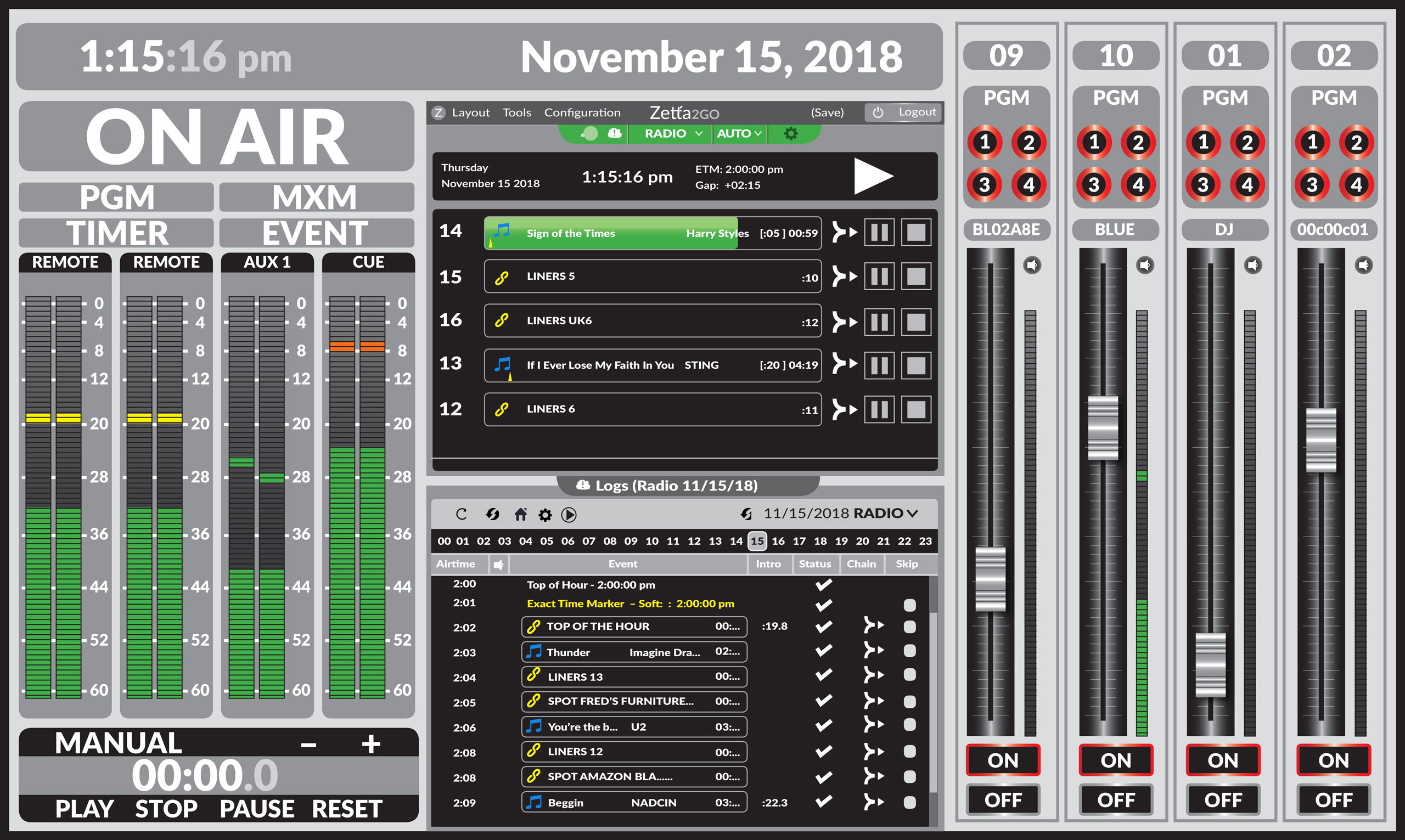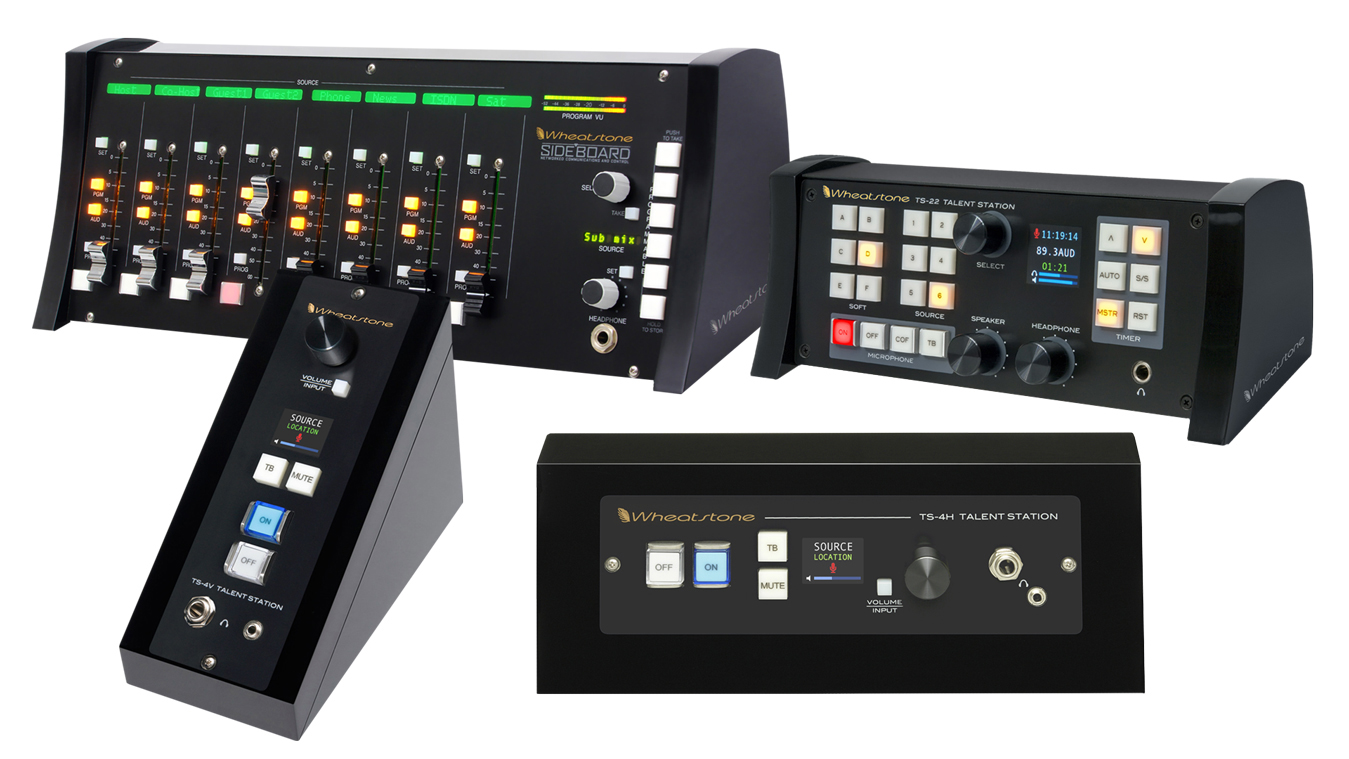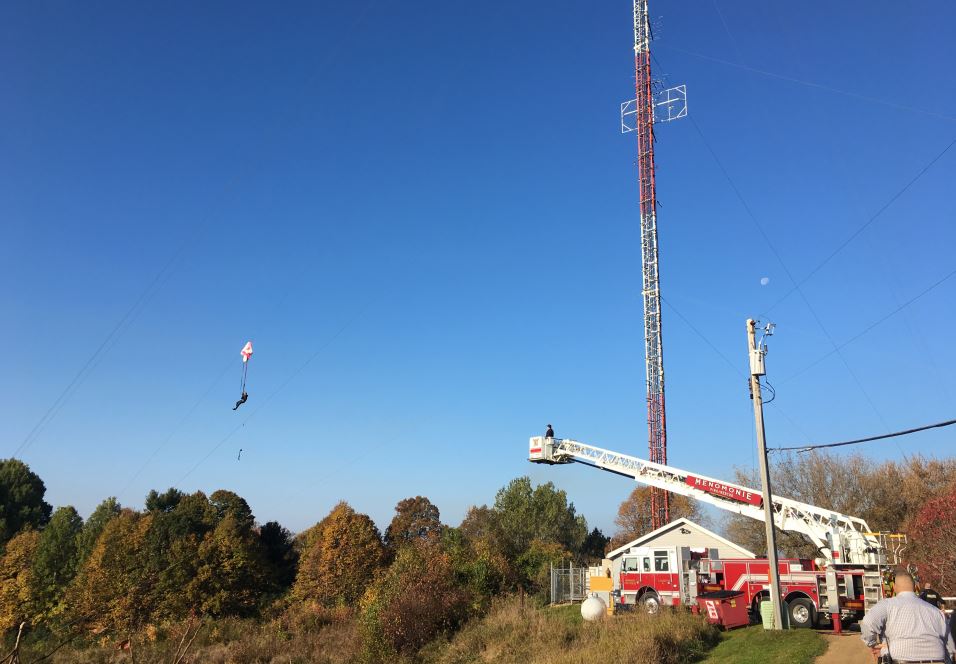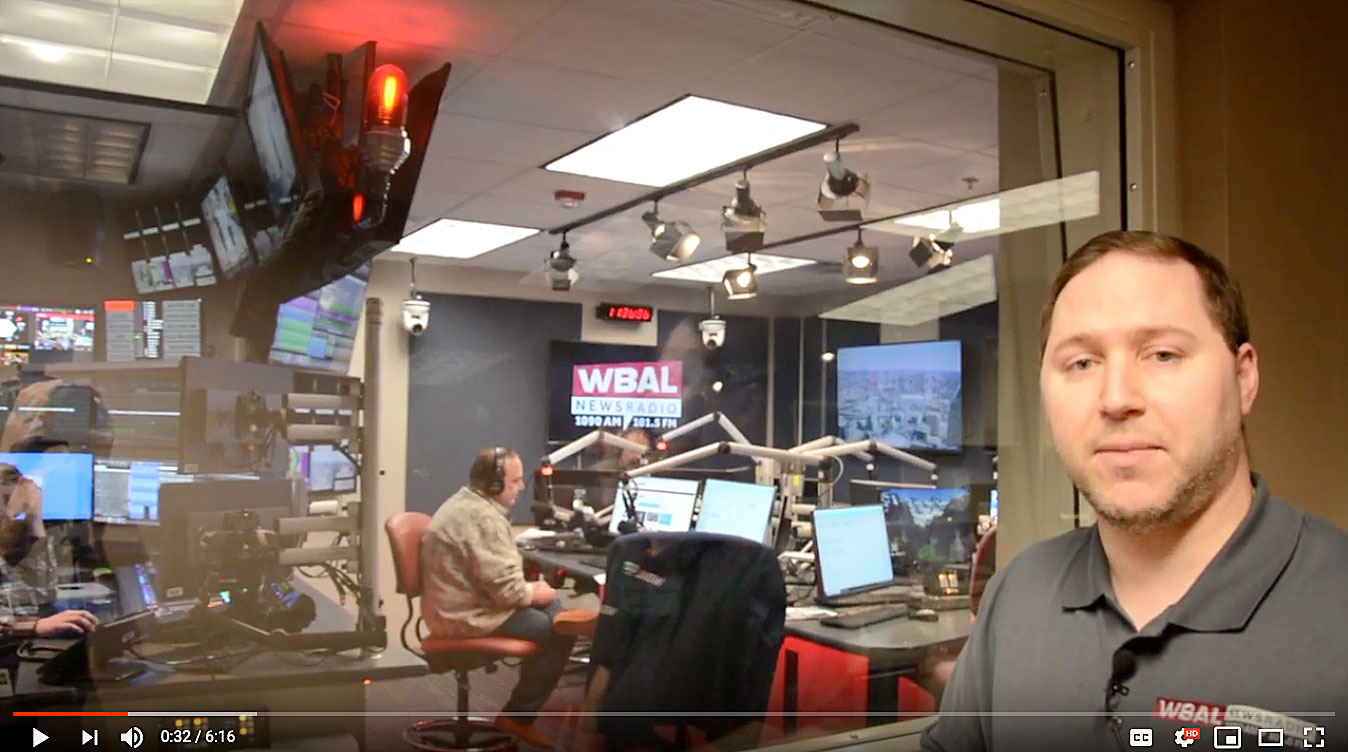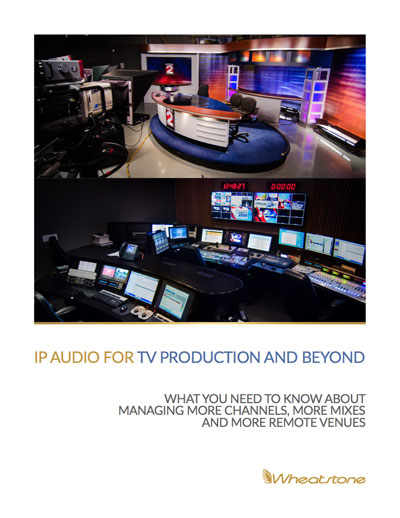WHEAT:NEWS NOVEMBER 2019 Volume 10, Number 11
A River Ran Through It
Click on the above for a pop-up photo gallery of photos from Curtis Media.
On September 13, 2018, water from the Neuse River spilled into Curtis Media’s facility in New Bern, North Carolina, depositing 36 inches inside the studios. The consoles, the equipment, the furniture, all the wiring was completely awash in soot, debris and floodwater pushed inland by Hurricane Florence. Even the backup generator was lost to the flood.
Then the water receded, and the real nightmare began.
Regional Director of Engineering Richard Banks was able to get into the studios within 48 hours and pull a spare server from the very top of a utility shelf to get programming to the group’s four FM transmitters, which were on high ground and largely unaffected.
The entire building four feet up needed to be stripped down to the studs and miles of wiring needed to come out. Very little was salvageable, except the server containing music and automation that Banks had placed high on a shelf as an afterthought some time ago.
He set up folding tables along the facility’s only concrete wall, found a generator nearby and grabbed a few spare consoles from the Wheatstone plant inland a few miles to serve as temporary studios that would keep V103.3 WMGV-FM, 101.9 WIKS-FM, 106.5 WSFL-FM and The New Hot 99.5 WXNR-FM afloat. He then began to plan his new studios. (Wheatstone’s factory in New Bern and had been spared the worst of it, although plenty of our employees were also dealing with the aftermath of Hurricane Florence – and some still are.)
“We quickly realized that we didn’t have the manpower to replicate the studios even if we wanted to. The wiring for our analog studios alone would have taken weeks. There was no way we were going to do anything but IP audio,” said Banks.
Banks and another engineer installed the IP-12 control surface with mixing engine, M4IP-USB mic processor BLADEs, and a VoxPro audio recorder/editor for seven studios, all identical. In came ready-made Quickline furniture for the three production rooms and four on-air studios, another product by Wheatstone. “I had to rewire the entire building, but when it came to the studios, all I had to do was run 12 shielded CAT 5 and a patch panel,” said Banks. “It didn’t take much but the wire.”
The studios came together easily enough, although much harder was getting contractors in and scheduled to do the work when others were also dealing with their own cleanup and renovation after Hurricane Florence. “It was first in, first out. You really do rely on your relationships with contractors in a major catastrophe like that. Fortunately, I had good working relationships with electrical and A/C and we were able to start rebuilding right away,” he said.
Neuse River flooded New Bern on Thursday, September 13. By Sunday, Banks got the stations back on the air and automated using a spare AudioVault server. By the end of the week, he acquired five IP-12 consoles systems from Wheatstone and restored live broadcast from the studios while renovation began in earnest. More than half the renovation had been completed by Christmas, just shy of the three-month anniversary of the hurricane. By the six-month anniversary, studios had new furniture, new boards, new routing and were fully functional. Final reconstruction of the building and studios was completed a few weeks ago, and now a year and two months later, it’s business as usual for the four stations.
What did Banks learn and what would he do differently if faced with a similar disaster again? “If this place flooded again, the first thing I’d do is resign,” he quipped.
Meet the Stream Guys
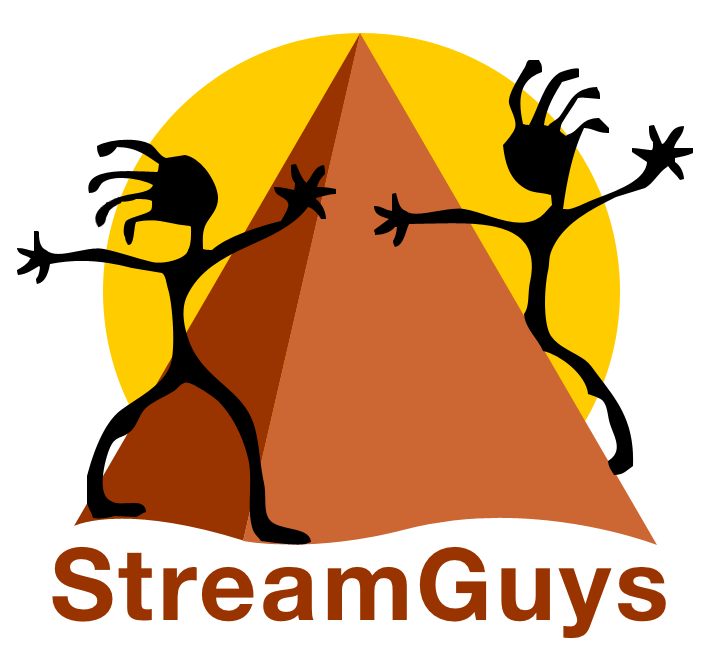 Streaming. Everyone’s doing it, but as we quickly learned from our friends at StreamGuys, there are a few things that divide the men from the boys.
Streaming. Everyone’s doing it, but as we quickly learned from our friends at StreamGuys, there are a few things that divide the men from the boys.
StreamGuys is an industry-leading service provider of live and on-demand streaming, podcasting delivery, and software-as-a-service (SaaS) toolsets for enterprise-level broadcast media organizations. We got to know the guys at StreamGuys while developing StreamBLADE, our new WheatNet-IP audio network appliance with selectable Opus, AAC and MP3 encoders as well as AGC, peak limiter and other audio processing designed to optimize the performance of encoded audio.
Here, in a recent conversation with SteamGuys’ Tim Labelle, we talk about the tools and trade of streaming for broadcast.
WS: What do you make of the state of streaming today? Do you think streamers are thinking about audio quality now that we’re seeing developments like smart speakers bringing music back into the home?
 TL: Processing always comes up when we talk to clients. And it’s clear that there’s some education that needs to take place, especially for those who don’t come from radio where there’s an obsession with quality. Often, it’s the digital media guy who’s managing the streams and he knows about bitrates and codecs but he doesn’t have much experience with signal processing and audio quality. Radio is way ahead of the regular streamer or podcaster in that regard.
TL: Processing always comes up when we talk to clients. And it’s clear that there’s some education that needs to take place, especially for those who don’t come from radio where there’s an obsession with quality. Often, it’s the digital media guy who’s managing the streams and he knows about bitrates and codecs but he doesn’t have much experience with signal processing and audio quality. Radio is way ahead of the regular streamer or podcaster in that regard.
WS: That’s good to know because stream quality is something we expect to improve drastically with our new StreamBLADE appliance, as you know. We’re also working together on ad insertion technology so let’s talk about that for a moment.
TL: Right. That’s big − prerolls and midrolls for live streams. As you know, we’re currently working with (Wheatstone systems engineer) Rick Bidlack to trigger midroll ads with the StreamBLADE, and that is important to podcasters and live broadcasters. It’s really like having personalized content during ad breaks for giving people relevant ads and making more money for the broadcaster − that’s the idea, since your local car dealer doesn’t really care about advertising to someone five states away. Then as metadata support comes along, that’s another important piece: getting the song names and names of programs on Web players.
WS: I can see how that could increase a station’s ad universe. It’s a way for a small market station to make revenue that they couldn’t do with just local advertisers.
TL: It works both ways. If you’re a smaller station that doesn’t have a national audience, you can now sell programmatic ads online. You might get a lower rate for those ads but you don’t have to go to all the work of selling them, so it’s a nice tradeoff. And if you’re iHeart and you have sales people across the country, now your LA sales people can run ad campaigns on the New York station.
On a more technical level, it’s nice because there is some buffer there. You can serve, say, 90 seconds of ads in a 60 second spot. The technology is really robust for making it a good listener experience.
WS: Thanks, Tim. It’s always great to work with a group of individuals who know broadcasters and understand what we’re trying to accomplish with StreamBLADE.
TL: You’ve done some good work there. StreamBLADE is just what’s needed for streaming quality, and, of course, having the full signal flow in one box is helpful, where Wheatstone is the single provider for AoIP, encoders and processing in one unified unit.
Loudness Monitoring
Here are three critical things to watch on the mixing desk and what you need to know about them for effective loudness monitoring.
1. VU indicator. The VU meter has been around for 80 years for a reason. It’s predictable, with predictable integration times and predictable release times so you can predictably read volume units. Remember it is an averaging meter and the peaks are far higher than indicated. For this reason you can expect to have about 20dB of audio headroom above 0dBVU to encompass them.
2. Peak level indicator to read the transient peaks of the signal. This indicator tells you if peak levels are in danger of overloading the dynamic headroom limitations of the console. The clipping point is usually at 0dBFS. Peak signal levels run usually at or above -20dBFS, with transient peaks kicking up to about -6dBFS occasionally.
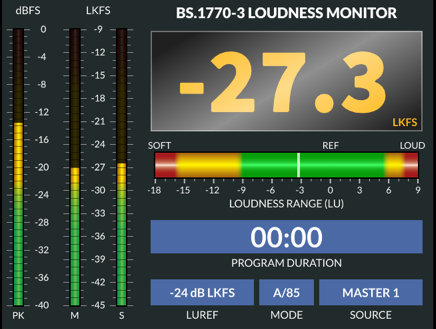 3. Loudness indicator for compliance with the ITU BS.1770-3 and similar television loudness standards. This indicator came about initially in response to the need to assess and regulate the loudness of adverts compared to regular programming. The Loudness Unit Full Scale (LUFS) or Loudness K-weighted Full Scale (LKFS) measurement shows the averaged loudness level of audio over time, usually much longer than that of a VU meter. The average loudness target level is -24 LKFS or -23 LUFS. By the way, you can’t miss this on a Wheatstone audio console – the LKFS/LUFS numbers are two inches high on the display screen. One LU (loudness unit) is equivalent to 1dB, so there's a direct correlation between how far the meter says you're over/under and how far you move a fader to compensate.
3. Loudness indicator for compliance with the ITU BS.1770-3 and similar television loudness standards. This indicator came about initially in response to the need to assess and regulate the loudness of adverts compared to regular programming. The Loudness Unit Full Scale (LUFS) or Loudness K-weighted Full Scale (LKFS) measurement shows the averaged loudness level of audio over time, usually much longer than that of a VU meter. The average loudness target level is -24 LKFS or -23 LUFS. By the way, you can’t miss this on a Wheatstone audio console – the LKFS/LUFS numbers are two inches high on the display screen. One LU (loudness unit) is equivalent to 1dB, so there's a direct correlation between how far the meter says you're over/under and how far you move a fader to compensate.
Console UX Trends 2020
A recent article in the Chicago Tribune observed that spending the morning with a certain radio host is “like watching someone with ADD fly an airplane – there are so many levels and buttons – callers, movie quotes, interviews.”
That much hasn’t changed since Wheatstone built its first console in the 1970s. The console is still very much at the center of radio, a tactile interface to listeners that is universal and yet personal at the same time.
What has changed is that the console is now attached to the AoIP network. IP audio systems such as the WheatNet-IP audio network have made sweeping changes in the studio operation, and that has bubbled up to the surface in some interesting and unexpected ways.
The most visible is the morphing between virtual and physical. We have virtual consoles such as Glass LXE that can be used as standalone consoles and virtual companions such as Remote LXE that can be networked to a physical LXE console, all with the familiar layout, faders and buttons personalities have come to know. The beauty of the virtual world is that you can tap through multiple screens from one small, thin tablet. You no longer have to load everything onto a large console frame or even on a single touchscreen. You can build separate custom screens for monitoring signal flow, gathering news, and whatever else you can dream up, thanks to scripting and development tools like ScreenBuilder.
With mixing, sourcing and controlling audio now spread across the WheatNet-IP audio network, physical consoles also have become more versatile.
There are more shapes, sizes and varieties overall, from mini-mixers in a turret like our Talent Stations and rackmount consoles such as our Sideboards on up to multi-frame LXEs with touchscreens that let you pinch, click and tap functions.
Software is a much more integral part of the console today, and that can be extremely useful to broadcasters. In the case of our LXE console surface, all the controls and buttons are programmable through a web UI. You can write your own custom scripts similar to those you might write for a virtual UI, only now you can create new functions for your physical LXE board that are unique to your studio, even adding your own graphics, logos and images. What’s more, one button can do a myriad of things. It can change color when it changes state to another function, for example.
Blurring the lines between what’s physically in the studio and what’s virtual on the network has far-reaching implications. WheatNet-IP audio networking gives consoles the flexibility to extend to many different studios, some in different parts of the world. As the AoIP network expands with appliances such as PhoneBLADE and StreamBLADE, so too does the console’s footprint and therefore the usability of that console.
WheatNet-IP is an AES67 compatible IP audio network. It is a complete ecosystem of consoles, talent stations, I/O units, accessories and virtual tools that includes online mixing and processing, scripting tools, audio drivers, and appliances. Hundreds of software or hardware elements make up the WheatNet-IP audio network as well as an additional 60-plus third-party add-ons, any or all of which can be connected together for any sized operation or purpose.
Adaptable. Practical. Reliable.
All buttons and controls on the LXE console surface can be customized using a simple web UI and linked to WheatNet-IP BLADE logic for controlling devices and triggering events. Full color OLEDs reflect your programming, and touchscreen UIs let you interact with your audio in fresh, new ways to do everything from pinching and dragging EQ to setting up router crosspoints in the network. Adaptable as a tabletop or flush mount, single or split frame, LXE modules can be grouped into bays and connected through the network.
Full LXE Under Glass
This multi-touch virtual console is studio-ready as a standalone UI into the WheatNet-IP audio network. Glass LXE is similar in function, feel and layout to the physical LXE console surface – but with multiple channel assigns and virtually unlimited profiles at the press of a button.
Virtual Companion to a Physical LXE Board
This multi-touch virtual console mirrors the physical LXE console surface for an independent, yet shared user experience during fast-paced, multi-operator productions. Remote LXE features real-time fader tracking and live synchronization of controls between the virtual surface and the physical LXE board.
BYO Virtual Development Toolkit
Create your own touchscreens for monitoring signals, controlling devices or mixing audio. ScreenBuilder has knobs, faders, timers and other widgets that tie into elements in the WheatNet-IP audio network and can be controlled using a scripting wizard for designing user interfaces ranging from simple codec selectors to complete news workstations.
The BLADE I/O access units that make up the WheatNet-IP audio network each have a toolbox that extends the functionality of all consoles and control surfaces on the network. Built-in utility mixers, processing, logic, SNMP, AES67, silence detection, automation control, and much more give each console reach across the entire network.
WheatNet-IP audio networked console surfaces vary, from mixers in a rack to all the controls talent needs in a small turret or surface-mount.
StreamBLADE is an AoIP appliance with selectable Opus, AAC and MP3 encoders as well as AGC, peak limiter and other audio processing designed to optimize the performance of encoded audio content. Cloud-ready and compatible with standard CDN and streaming platforms, StreamBlade accepts eight input steams of native WheatNet-IP audio, each capable of four outputs for a total of 32 total output streams.
SwitchBLADE combines WheatNet-IP native audio and logic control with SIP and codec bandwidth optimization to transport both high-quality programming and the control logic critical for full studio operation between sites.
PhoneBLADE is made specifically for connecting VoIP phone systems directly into the WheatNet-IP audio network without telephone hybrids or other interfaces.
Hear Ye, Hear Ye. X5 Update.
 The X5 FM/HD audio processor has been out in the wild for some time now and we continue to get positive and valuable feedback from broadcasters using it in markets large and small.
The X5 FM/HD audio processor has been out in the wild for some time now and we continue to get positive and valuable feedback from broadcasters using it in markets large and small.
We just recently released software version 1.2.0 for the X5, which includes enhanced performance from our Limitless© FM clipper, front-end AGC and bass section, plus added refinements to the RDS/RBDS features and improvements to the built-in HD time alignment algorithm to enhance its performance with watermark‐based ratings services.
Click on our X5 support page for download details.
Interesting Links:
SwitchBlade - AoIP/SIP distribution appliance
PhoneBlade - Smart VoIP/AoIP phone system
StreamBlade - Stream WheatNet-IP
Glass LXE - Virtual LXE IP audio console
Remote LXE - Virtual remote audio console for physical LXE
X5 - FM/HD broadcast audio processor
MPX SyncLink - IP multiplex receiver for use with X5
Strata 32 - IP audio TV console
Virtual Dimension Three - Virtual Dimension Three IP audio TV console
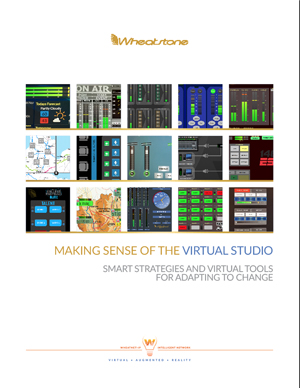 Making Sense of the Virtual Studio
Making Sense of the Virtual Studio
SMART STRATEGIES AND VIRTUAL TOOLS FOR ADAPTING TO CHANGE
Curious about how the modern studio has evolved in an IP world? Virtualization of the studio is WAY more than tossing a control surface on a touch screen. With today's tools, you can virtualize control over almost ANYTHING you want to do with your audio network. This free e-book illustrates what real-world engineers and radio studios are doing. Pretty amazing stuff.
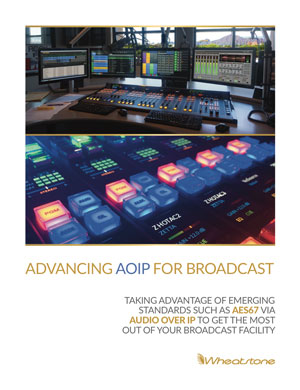 Advancing AOIP for Broadcast
Advancing AOIP for Broadcast
TAKING ADVANTAGE OF EMERGING STANDARDS SUCH AS AES67 VIA AUDIO OVER IP TO GET THE MOST OUT OF YOUR BROADCAST FACILITY
Putting together a new studio? Updating an existing studio? This collection of articles, white papers, and brand new material can help you get the most out of your venture. Best of all, it's FREE to download!
IP Audio for TV Production and Beyond
WHAT YOU NEED TO KNOW ABOUT MANAGING MORE CHANNELS, MORE MIXES, AND MORE REMOTE VENUES
For this FREE e-book download, we've put together this e-book with fresh info and some of the articles that we've authored for our website, white papers, and news that dives into some of the cool stuff you can do with a modern AoIP network like Wheatstone's WheatNet-IP.
Got feedback or questions? Click my name below to send us an e-mail. You can also use the links at the top or bottom of the page to follow us on popular social networking sites and the tabs will take you to our most often visited pages.

